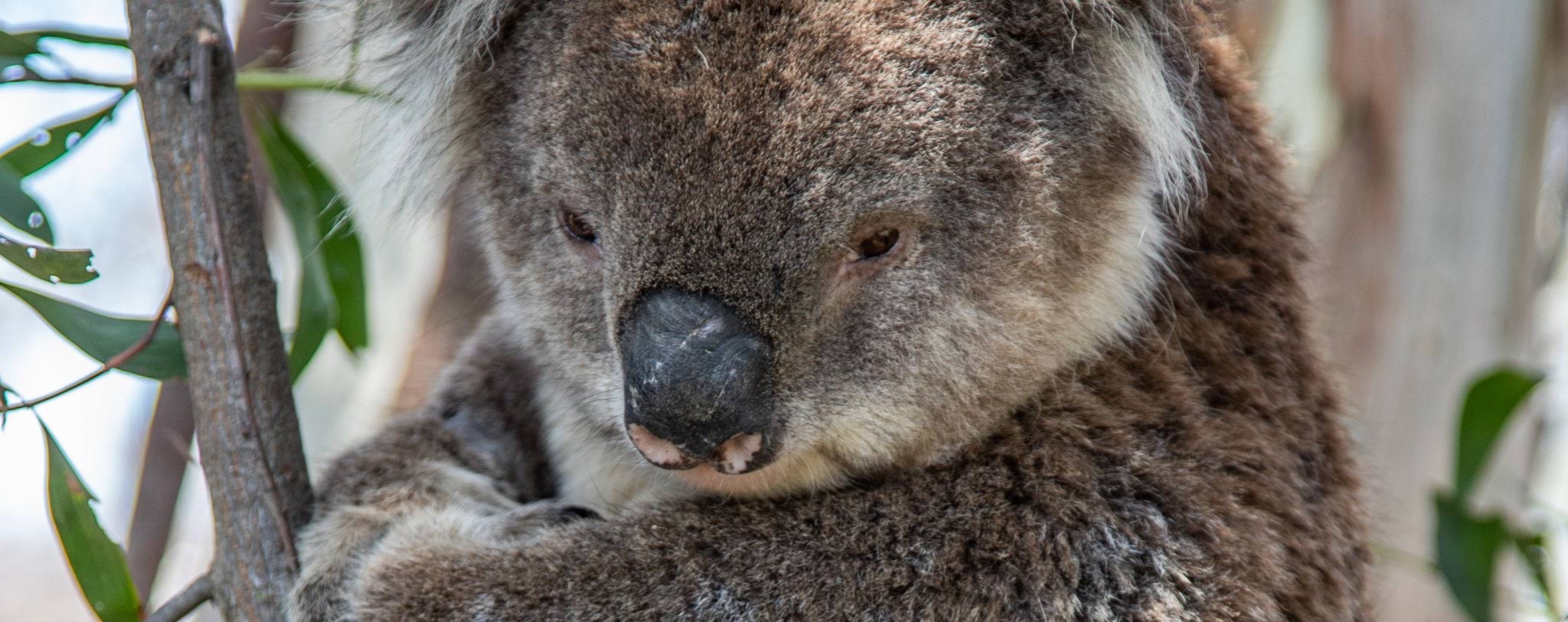Relevant legislation
All wildlife in Victoria are protected under the Wildlife Act 1975 (Wildlife Act) and the Prevention of Cruelty to Animals Act 1986 (POCTA Act). These Acts include offences for disturbing, harming, possessing or destroying wildlife without the appropriate authority.
Section 28A of the Wildlife Act allows for an authorisation to be issued to control wildlife (including hunt, take, destroy, possess and disturb) provided that the Secretary of DEECA (or delegate) is satisfied that it is necessary for at least one of the reasons listed in that section.
To ensure compliance with these requirements, the Conservation Regulator requires owners and managers of blue gum plantations where Koalas are likely to be disturbed in Victoria to develop a koala management plan and hold an authorisation to disturb Koalas during plantation management operations.
Disturbance must be in accordance with an endorsed koala management plan and authorisation conditions. A breach of conditions is an offence under the Wildlife Act and can result in large fines or suspension, cancellation or restrictions to the authorisation.
Where an authorisation has been granted under section 28A of the Wildlife Act, an authorisation holder is exempt from cruelty offences under the POCTA Act. Accordingly, a breach of a condition of an authorisation issued under the Wildlife Act could also result in contravention of the POCTA Act.
Victoria Planning Provisions
Under the Victoria Planning Provisions (VPPs) and all planning schemes, forestry and timber production is a defined land use, allowing for the establishment, management and harvesting of plantations and the harvesting of timber from native forests. As the responsible authority, local government is required to ensure compliance with the VPPs and all planning schemes, including permit requirements and the Code of Practice for Timber Production 2014 (the Code). Clause 53.11-2 of the VPPs specifies that the Code must be complied with to the satisfaction of the responsible authority. It is an offence under section 126 of the Planning and Environment Act 1987 to fail to comply with the planning scheme. Fines or prosecution may result. Local government may monitor and enforce compliance with the Code.
Code of Practice for Timber Production 2014 (the Code)
The Code governs three types of timber harvesting activities in Victoria: activities occurring in state forests (Chapter 2), private native forests (Chapter 3) and plantations (Chapter 4). Chapter 4 is relevant for blue gum plantations. As stated above, compliance with the Code is mandatory for private native forests and plantations under the VPPs.
The purpose of the Code is to provide direction to timber harvesting managers, harvesting entities and operators to deliver sound environmental performance at all levels of timber harvesting operations. This includes planning for and conducting commercial timber harvesting operations. Under the Code, protection of relevant environmental values must be addressed, with a Timber Harvesting Plan required to be prepared and submitted to the responsible authority prior to the commencement of operations. Additionally, the Code states that planning and management of timber harvesting operations must comply with relevant biodiversity conservation measures specified within the Management Standards and Procedures (section 2.2.2.1), which for private land is the Management Guidelines for the Code of Practice for Timber Production on Private Land (native vegetation and plantations) in Victoria.
Appendix A of the Code sets out legislation and regulations which apply to timber harvesting productions.
Appendix 1 of this document provides guidance to Councils and blue gum plantation owners and managers regarding Timber Harvesting Plans as required under the Code.
Who is required to hold an authorisation?
If you are an owner or a manager of a blue gum plantation or native vegetation and you are planning to undertake works that may impact Koalas, you must comply with all relevant legislation including the Wildlife Act.
All owners and managers of blue gum plantations have obligations to protect wildlife during operations. Owners and operators of blue gum plantations should assess Koala densities and obtain an authorisation to disturb Koalas before undertaking any activities that will disturb Koalas. Activities which disturb or harm Koalas without an appropriate authorisation in place would constitute an offence under the Wildlife Act and/or the POCTA Act.
Where the owner or manager of a blue gum plantation undertakes the management (harvest planning, harvesting, silviculture, roading etc.) of the plantation, either directly or through employed staff or contractors, the plantation owner or manager is responsible for obtaining authorisation to disturb Koalas.
If you are not sure whether you need to apply for an authorisation, please visit the Conservation Regulator website(opens in a new window) or call DELWP Customer Contact Centre on 136 186.
Roles and responsibilities
Key roles and responsibilities for minimising impacts to Koalas in blue gum plantations:
| Plantation owners and managers |
|
| Landowners |
|
| Local government | Timber production is a defined land use in the Victoria Planning Provisions and all planning schemes. Local government oversees compliance with the planning provision system, including:
|
| Conservation Regulator | The Conservation Regulator is responsible for administration of the Wildlife Act, including:
|
Updated
